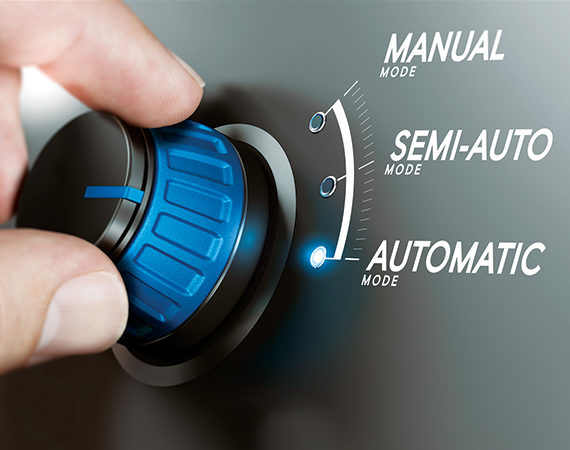Ask any company officials or managers if they want to automate their processes and most would answer with a resounding “Yes!” The thought of automation conjures up ideas of efficiency, value and speed that boost the production of a manufacturer and the value it delivers to customers.
But automating something doesn’t magically make it better. If the process itself is broken or isn’t optimized, automating it will not deliver the benefits a company would expect. Manufacturing companies are best positioned to take advantage of automation when their processes are already highly optimized.
Seitz Stainless, an Avon-based manufacturing company that specializes in sanitary stainless steel fabrication, is working to examine and optimize critical processes before its new ERP (enterprise resource planning) system investment goes live. The company chose to implement an ERP to standardize the quoting, designing and fabricating of its products, as well as support its workforce and growth goals. “To automate the flow of information throughout the plant, we first needed to evaluate our current processes and improve them before applying automation,” says Jeff Haviland, president of Seitz.
Enterprise Minnesota is using VESSA to help Seitz position itself to take full advantage of automation’s efficiencies and grow profitably.
Meet VESSA
VESSA is a process that guides companies through closely examining their operations and determining what needs to be improved, eliminated, simplified or standardized before automation is applied. Companies that follow this process see more efficient operations in the short term and are better positioned to reap the benefits of automation in the long term. Only with the right preparation can an investment in automation grow employees’ skills and improve productivity.
VESSA can assist the process and help a company recognize where time, space, energy and materials are being wasted and where processes can be simplified, improved and standardized.
Working through a complete and objective self-examination with an outside consultant—someone not intimately connected to the organization—can help an organization discover what it is doing that is working well and not so well. What are the methods and processes used every day that are efficient and effective enough to optimize production? Where are time, materials and energy being used efficiently, and where is there waste? What steps can be eliminated, simplified, or streamlined? What procedures can be put in place for better recordkeeping and data collecting?
In every manufacturing situation, there are best practices that have proven to be effective and that a company can apply to its own particular needs and processes to make production flow more smoothly. But unless a company takes the time to examine its “business as usual” and looks hard to find the areas that fall short, it will never reach optimum production.
VESSA can assist the process and help a company recognize where time, space, energy and materials are being wasted and where processes can be simplified, improved and standardized.
Roadmap positions Seitz for state grant
“As part of the VESSA process, we worked with Enterprise Minnesota on a value-stream office mapping project to get the non-value added processes out of the system prior to collecting and loading the data into the ERP system,” Haviland says. This ensured Seitz avoided putting poor-quality data into the ERP system, which would only result in bad outputs—the commonly called “garbage in/garbage out” trap.
“Seitz is really thinking about its long-term strategy, and that starts with understanding the processes and what can be improved,” says Minnesota Business Development Consultant Dawn Loberg. “The value-stream mapping drives out the non-value add so that you only automate efficient processes, not outdated ones.”
Typical outcomes of the value-stream mapping process include a lead-time reduction of 50 percent.
The value-stream mapping encompassed both the front office and order flow. Employees evaluated the steps of each critical process and created an improvement plan to reduce cost, improve lead-times and quality, and increase capacity. Although results vary by company, typical outcomes of the value-stream mapping process include a lead-time reduction of 50 percent, a capacity increase of 15-25 percent because of reduced staff time, and improvements in employee knowledge of project management. Improving key processes may also create opportunities for higher sales margins and volumes due to the ability to respond faster and more effectively to customer requirements.
The improvements made as a result of the VESSA process and value-stream mapping positioned Seitz to apply for an Automation Training Incentive Pilot Program grant from the Minnesota Department of Employment and Economic Development (DEED). The grant helped cover the cost of working with Enterprise Minnesota.
“The VESSA process enabled Seitz to get the DEED automation grant because it demonstrated a clear roadmap of how the company was going to prepare for and maximize its automation investment, as well as how the investment supported company growth and the local workforce,” Loberg says.
Seitz also partnered with Enterprise Minnesota on continuous improvement training for process flows. Once the ERP is implemented and live, Enterprise Minnesota will conduct a Kaizen event to ensure flow efficiencies are maximized as planned.
“We expect to see good results from the VESSA process and ERP implementation,” Haviland says. “Office productivity will improve, as will purchasing efficiency and inventory management. We also anticipate that faster setups, faster changeovers, and minimal wait time will make the work more productive for our employees and deliver better service to our customers.”
…
Featured story in the Spring 2020 issue of Enterprise Minnesota magazine.


